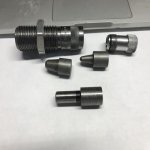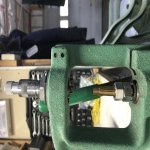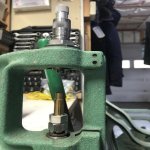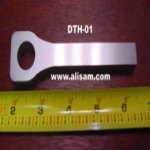- Location
- Near Coldwater, Ont
Has anybody tried this? If so how did you go about it and how did it work out? I am thinking that cutting the die body shorter and the collet as well should do it. I am also planning to shorten a 9.3x62 case length gauge. My thoughts on this are to cut some length off the end with the " pin " that goes through the flash hole, then drill the center of it to accept a decapping pin from a sizing die. JB weld or similar to hold the decapping pin. Any thoughts or better ideas appreciated. I know these can both be custom ordered from Lee, but wait time and cost makes me think this may be a better option.
Jim
Jim



















































































